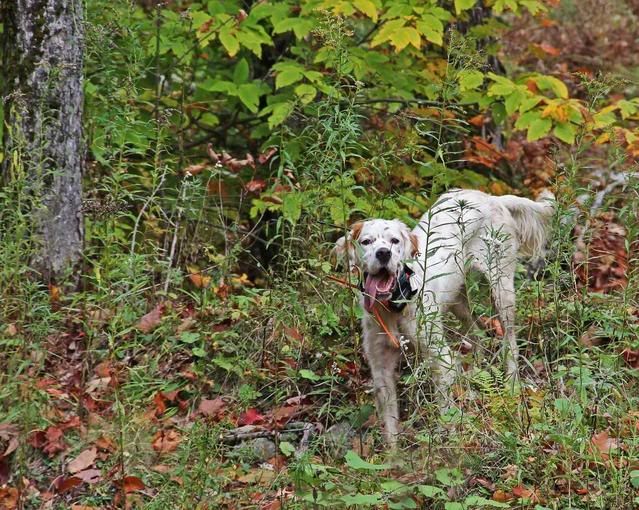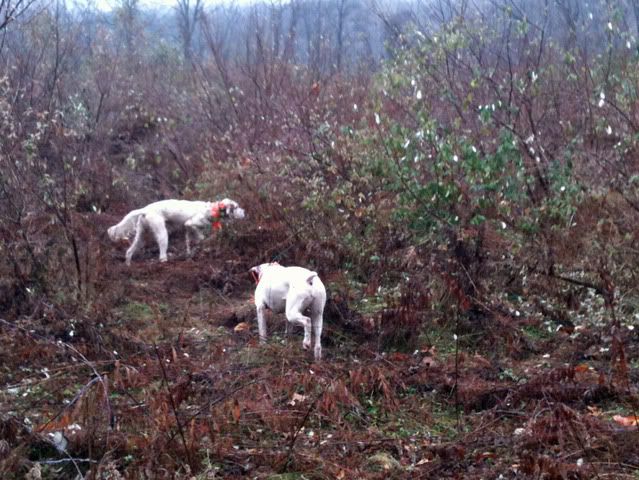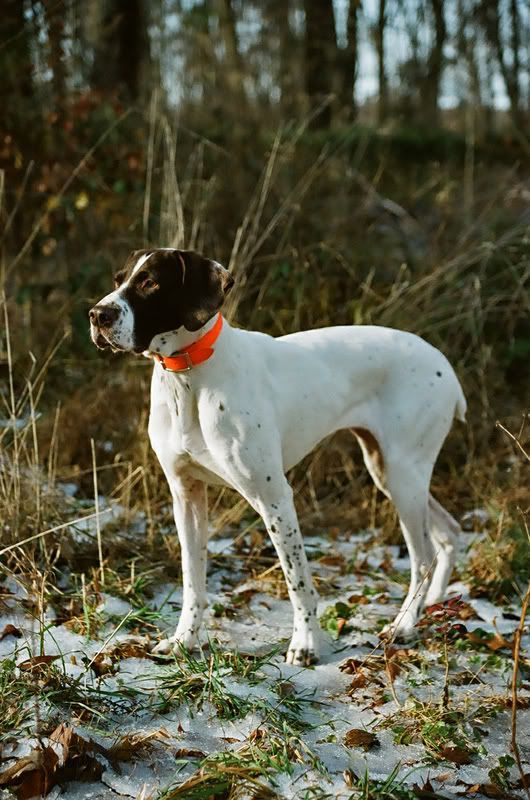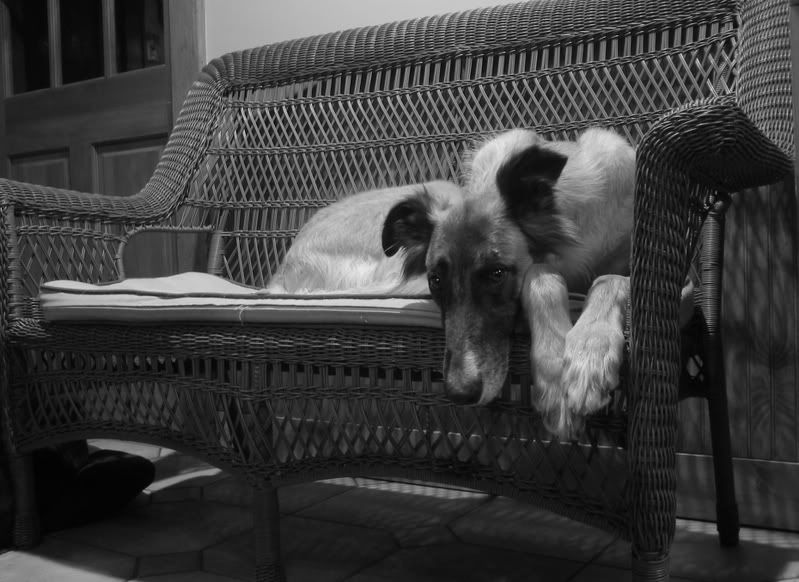Some of you may have read earlier posts I've made on Gun Dog Forum about this
dog - my wife is fighting cancer and she has been after me to find him another
home, and despite a few "almosts" so far I have been unsuccessful.
My setter, Buddy, has not really been pointing, hardly ever.
I've seen him do it, but a real point from this dog has been the exception
rather than the rule. He's crazy about birds, but things had sort of fallen
apart on the steadiness side of things late in the summer, and I let it happen.
His point was not just awful and mostly non-existent; even worse be had started
blinking birds. To try and build back the desire and drive I have been avoiding
any and all correction around anything bird related. I was showing him pigeons,
throwing them out and letting him chase. He's a young dog and a rescue, and
this is his first hunting season. Like all rescues he has some issues and we've
been (so far) successfully working through them, but I guess at the end of the
day nobody wants a bird dog with no pedigree that doesn't point and had a
tendency to bite when I first brought him home. He doesn't bite anymore and has
grown past that problem, but it's apparent he's not going anywhere anytime
soon.
My plan was (and is) to make the most of things and hunt him
as much as possible. I want to get him as much exposure to wild and otherwise
un-planted frisky birds to try and get his brain to connect the dots and get
him pointing. We had a fantastic day in Maine on the grouse season opener, and
a couple of good training experiences on grouse leading up to it. But other
than that, my time has been spent caring for my wife and we haven't had much
chance to get out and hunt.

Buddy in Maine - October 2011
Say what you want about NJ, but we have a top notch pheasant
program and the state breeds and raises very high quality birds, so I've had
high hopes our Jersey pheasants would help do the trick. I took Thanksgiving
week off and went out with my two dogs early in the week. It was raining, the
intensity varying from drizzle to light and steady showers, but thanks to the
wet weather I had 4000 acres of freshly stocked state land mostly to myself. I
only saw one other hunter all day and he was leaving when I arrived. Buddy
bumped a bird right out of the gate, and then found a hen; a runner he tracked
for 100 yards down a briar choked hedgerow which flushed and hooked back
towards me, offering a clear but fast moving left to right shot. I missed with
both barrels. He gave chase and I let him run, calling him off when he got to
the end of the field. 15 minutes later he locked up on point; a genuine tail-straight-out-behind-and-foreleg-raised
point on a woodcock which then flushed wild after holding only a few seconds. I
heard it fly off on the other side of the hedgerow and I was pleased he was
steady to the flush this time with no correction from me.
Sometime later, the two dogs were working about 200 yards
ahead when I heard a beeper go off in the field. I expected the bird to get up
out of range, because that's what they'd been doing and this was the 4th or 5th
bird. I'd had no other shot opportunities from the wild flushes. I started
moving faster, and in the minute or so I spent plowing through the brush and
briars I came to the conclusion it must be my shorthair on point. She's steady
and will hold a point as long as the bird stays put. Knowing that Buddy is not
steady on birds, and seeing as the bird didn't get up and the beeper was still
beeping, I assumed it had to be Marzy on point. When I was within 40 yards, I
still couldn't see the dog whose collar was beeping away, but then the bell I
had been hearing tinkling off to my right in the hedgerow materialized into my
GSP as she burst through the brush and cut over the tractor path into the
field. Each of the dogs has a bell that differs just a little bit in tone.
Buddy's is pitched slightly lower, but I can't really tell them apart if I
don't hear both at the same time.
Moving another 10 yards towards the sound of the beeper, I
saw Buddy locked up on point at the same time Marzy did and she hit the brakes
to back him. I realized I just had to get a picture of this, even if it cost me
the shot. I cradled my Browning 16 gauge in my left arm while I dug the phone
from my back pocket. I was able to snap one picture before a rooster exploded
into the air and quartered away to my left. I dropped my iPhone in the grass
and swung on the bird, missing the first shot but knocking a cloud of feathers
loose with the second. The bird was tough and a strong flyer. It continued to
climb for a few seconds, and then abruptly settled into a glide before folding
into the hedgerow 300 yards away. "Buddy, Fetch!" I called, but both
dogs were already gone. I didn't whoa my shorthair because I didn't want to
confuse Buddy into thinking he'd done something wrong around a bird and so I
just let them both go. I broke my gun open, pocketed the empties, found my
phone, and hustled out to the tractor path and down the field to where the bird
went down. Unfortunately Marzy stole the retrieve, but I threw the bird out
again for Buddy which he delivered to hand.
I think the light bulb has switched on, the dots are
starting to connect, and his pointing instinct is starting to blossom. We put
up nine birds that day, of which seven finds belonged to Buddy. Although we
only took the one bird, it was enough for me.
I am so proud of this poor setter I found just one year ago
as a puppy. Some cruel human abused, mistreated, and neglected him, ruined him
on birds, and then threw him away like a piece of garbage - intentionally
abandoning him to starve. I have a fondness for this dog that I can't explain
the reason for or express with words. He loves me and trusts me, and I suspect
I was the first human being he had ever met who treated him with kindness and a
gentle hand.
I know the image quality of this photo is not very good, but
it captures a special moment - Buddy's first solid steady point that ended with
a bird in the bag.
Buddy on Point while Marzy backs - November, 2011











